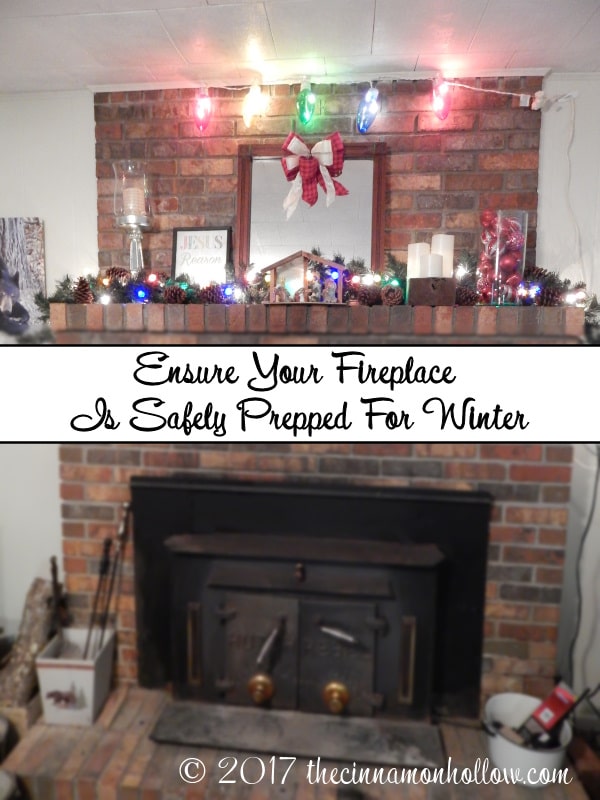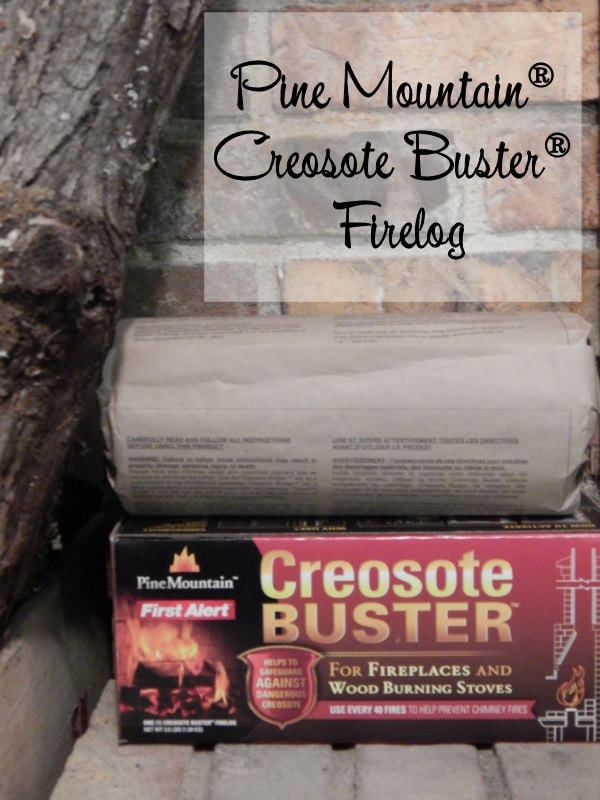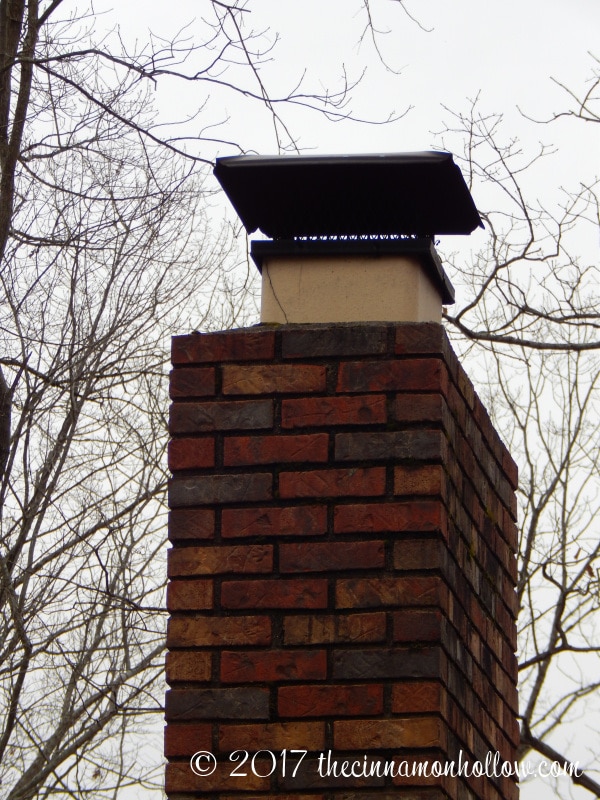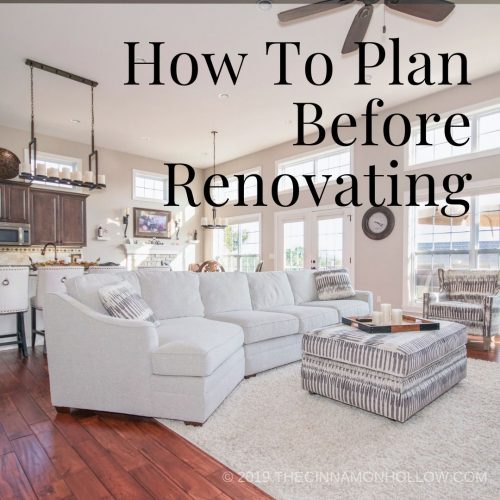The “new to us” home that Clay and I just purchased has a fireplace with a wood stove insert. I am thrilled! We’ve both always wanted a home with a fireplace. There is something about a toasty fire, either in the fireplace directly or in a wood stove, that makes a house so cozy and romantic. There are some things that need to be done each year to prep your fireplace for a long winter of use.

I made up a checklist of the things that we, personally, need to do or have already done, to make sure our fireplace and insert are ready for use. And just in time too because it got cold fast!
One thing that Clay and I discussed was possible creosote build-up. We couldn’t afford to hire a chimney sweep this year, having just bought the house, so we decided to try a Pine Mountain® Creosote Buster® Firelog. I actually teamed up with them to bring some safety tips to you.

We have always used the Pine Mountain® brand starter logs. Before we bought our house, we used them in our firepit. Now we have both and will use them in both areas! In my opinion, this brand is the easiest to light and burns the longest. It really helps me get a fire going quicker.
Ok, to get your fireplace prepped and ready for winter an the Holidays, there are a couple things to do. If you can hire a Chimney Sweep, great! If not, there is something down the list you can use to remove creosote.
- Debris: Check chimney for debris. If your flue doesn’t have a screened cover, birds and other critters can get in there and wreak havoc. Birds will make nests in chimneys and squirrels will get in there to bed down for winter. Clear it out!

- Cap/Screen: Install a screen/cap. If your chimney doesn’t have one, install one! This keeps all those pesky critters out of there. Some Chimney Building Milwaukee services can do this for you and save you the trouble of going up there yourself to fix it on.
- Damage: Check for any cracks, loose bricks, cracked or missing mortar, etc. If you find any get them repaired right away and don’t use your fireplace until you have.
- Damper: Make sure your damper is functioning properly. Pull the handle in and out and look in there to make sure the flue opens and closes correctly.
- Stove or Wood Insert: If you have a stove or insert, check that it is properly installed, sealed and nothing is loose. Ensure the doors seal properly and that the vents are clean.
- Check the blower: Our old insert has an electric blower on it. We checked the wiring to make sure there were no frays and that it still worked. It is LOUD but it seems to be working perfectly. I still think I’ll have an electrician friend give it a once over to make sure.
- Creosote: Burn a Pine Mountain® Creosote Buster® Firelog. This will remove any Creosote build up you may have. You can actually add this to an existing fire. When heated, the powder in the Firelog changes to an active gas and attacks the creosote in the chimney. It is all natural and reduces creosote in wood fireplaces and wood stoves with a patented technology. We have already used one and there was no weird odor. No smoke. It just burned like a regular fire. When done. the chimney was nice and clean and free of creosote build-up.
Used once per season, Creosote Buster firelog reduces creosote buildup and the chance of a home heating fire, the second leading cause of home fires.

- Ash box: If your chimney has an ash box at the bottom, make sure you clean all the old ashes out. This should be done regularly, with cooled ashes, but in case you forgot at the end of last season, check to make sure it’s clean. We have an insert and no longer need to use this part of our chimney, since all the ashes stay inside the stove.
- Fireplace screen: If your fireplace doesn’t have a stove insert, like ours, use a screen to keep hot embers from popping out onto other items. If you do have an insert, keep the doors closed or used a screen. Most wood stoves and inserts need to be used with the doors closed to keep the wood burning longer and to make the heat radiate better. We can open our for a little while if we want to pop popcorn, toast marshmallows or simply watch the fire for a little while. When we do, we use a fireplace screen.
- Smoke and Carbon Monoxide Alarms: Make sure smoke alarms and carbon monoxide alarms are functioning properly. If you don’t have any, GET SOME! This step is one of the most important. Get these alarms to alert you if something go wrong. Most, if not all, states require both if you have any form of fire burning device in your home. Wood stove, fireplace, gas, etc.
The second year we were married, Clay and I almost died from carbon monoxide poisoning. It is an odorless gas. You do not know it is there! We had a ventless gas stove that malfunctioned. I fell asleep and he was nodding off when the alarm sounded, waking us up enough to stumble outside and call for help. Our neighbor down the road (this was in the country) was a volunteer firefighter and he had a meter in his truck. He came and took a reading and it was sky high by the time he got there. If we hadn’t had that carbon monoxide alarm, neither of us would be here!
- Firewood: use only dry, well seasoned firewood. Oak is a great, decent burning wood. If you don’t have a place to chop it, you can get it from locals for pretty good rates. Keep it on a wood pallet, if you don’t have a wood shed, to keep it dry and off the ground. Stack enough wood and kindling for the night, in a safe place inside your home, not directly in front of the fireplace, when you’re burning a fire.
- Decor: Don’t place decorative items directly in front of your fireplace or right above the opening. This is a fire hazard and spells disaster. If you are going to decorate make sure you move those things before starting a fire. Our stockings will be hung on the mantle but moved each night we build a fire in the stove. It’s a simple task to lift them off their hooks and place in another area until the fireplace is cool.
- Do not leave unattended: Please, don’t leave a fire unattended. If this is your only source of heat and you have to leave, PLEASE make sure there is not a roaring fire in your fireplace when you do!
- Ash disposal: Always make sure your ashes are cooled before removing them from the stove/fireplace and dumping them. Place them in an aluminum can with a lit to keep them until disposing. Our daughter was given some chickens from her papaw so we plan on saving ours up and using them for “chicken bathing”. They like to roll around int he cool ashes and it helps keep mites and things away. I was also told that it works great for their waste to help break it down! Anyway, never dispose of hot ashes in a trash bag, etc. If you put them in a fire pit or something water them down! Your area probably has specific regulations for disposing of ashes so check with your city/county to make sure.
I feel like I’m leaving something out that I had on my list but those are the top things to do to make sure your fireplace is prepped and ready for winter as well as a few things to remember when burning a fire.
Aside from checking for cracks and damage as well as debris, the Pine Mountain® Creosote Buster® Firelog’s are a great way to get your chimney in tip top shape each season. Those three things and checking batteries in smoke and carbon monoxide alarms are my top tips.
We have only been in the house a few weeks so we’re working on ours this week. Have you prepped your fireplace for winter, yet?






